What is plant medicine?
Introduction to Plant Medicines
Plant medicines have been used for thousands of years by indigenous cultures around the world for healing, spiritual growth, and connection with the natural world. These powerful natural substances, derived from various plants, fungi, and trees, offer profound opportunities for personal transformation, emotional healing, and spiritual awakening. As interest in these ancient practices grows, many people are seeking to understand how to safely and respectfully engage with plant medicines. This guide is designed to provide beginners with an introduction to the world of plant medicines, offering insights into their history, uses, benefits, and the importance of approaching them with the right mindset and environment.
What Are Plant Medicines?
Plant medicines are a natural wonder of the world. Just like so many of the worlds mysteries, no one knows when these medicines appeared. They have no beginning and quite plausibly no end, given that they've survived all the earths events. These are medicines that mother earth has created and offered to us. Plant medicines are natural substances derived from plants, fungi, or trees that are used for healing, spiritual practices, and personal growth. These substances contain active compounds that can induce altered states of consciousness, facilitate emotional and physical healing, and provide insights into the nature of reality and the self. The most known plant medicines include; Ayahuasca, Psilocybin, Iboga, Cacao, Peyote/San Pedro and more.
Plant medicines are not the same as conventional medicines. While they have therapeutic potential, they are often used in a holistic context that includes mental, emotional, and spiritual dimensions. Their effects can be profound and long-lasting, and they are best approached with respect, care, and a willingness to engage in deep inner work.
A Brief History of Plant Medicines
Plant medicines have been an integral part of human culture and spirituality for millennia. Indigenous peoples across the globe have used these natural substances in rituals, ceremonies, and healing practices, often guided by shamans or healers who understand the spiritual and medicinal properties of the plants.
-
Ayahuasca: Used by indigenous tribes in the Amazon basin, ayahuasca is a brew made from the Banisteriopsis caapi vine and the leaves of the Psychotria viridis plant. It has been used for centuries in shamanic ceremonies to connect with the spiritual world, heal emotional wounds, and gain insights into the self and the universe.
-
Psilocybin Mushrooms: Also known as magic mushrooms, psilocybin mushrooms have been used by indigenous peoples in Mesoamerica for thousands of years. These mushrooms are considered sacred and are often used in rituals to facilitate communication with the divine, explore consciousness, and heal the mind and spirit.
-
Peyote and San Pedro: These cacti are used by indigenous peoples in North and South America for spiritual and medicinal purposes. Peyote, used by the Native American Church, is known for its ability to induce visionary experiences and deep spiritual insights. San Pedro, used by the indigenous peoples of the Andes, is often associated with heart-opening experiences and connection to nature.
-
Iboga: A powerful plant medicine from Central Africa, iboga is used in the Bwiti spiritual tradition of Gabon. It is known for its ability to induce intense, introspective journeys and is often used for healing and initiation rites.
These are just a few examples of the many plant medicines that have been used throughout history. Each culture has its own unique practices and beliefs surrounding these sacred plants, and it is important to approach them with respect for their cultural significance.
How Plant Medicines Work
Plant medicines contain active compounds that interact with the brain and body to produce a range of effects. These compounds often mimic or influence the activity of neurotransmitters, the chemical messengers in the brain, leading to altered states of consciousness, changes in perception, and emotional or spiritual insights.
-
Psychedelic Compounds: Many plant medicines contain psychedelic compounds, such as DMT (found in ayahuasca), psilocybin (found in magic mushrooms), or mescaline (found in peyote and San Pedro). These substances can produce profound changes in perception, including visual and auditory hallucinations, altered sense of time, and deep emotional or spiritual experiences.
-
Entheogenic Effects: The term "entheogen" refers to substances that are used to induce spiritual experiences or connect with the divine. Plant medicines are often considered entheogenic because of their ability to facilitate profound spiritual insights and a sense of connection to something greater than oneself.
-
Physical and Emotional Cleansing: Many plant medicines are known for their purgative effects, which can involve physical cleansing through vomiting, sweating, or diarrhea. These physical effects are often accompanied by emotional release and are considered an important part of the healing process.
-
Neuroplasticity and Healing: Recent research suggests that some plant medicines, such as psilocybin and ayahuasca, may promote neuroplasticity, the brain's ability to reorganize and form new neural connections. This effect may underlie some of the therapeutic benefits of these substances, including their potential to alleviate depression, anxiety, PTSD, and addiction.
The Role of Set and Setting
One of the most important concepts in the responsible use of plant medicines is the idea of "set and setting." This refers to the internal and external factors that can influence the outcome of a plant medicine experience:
-
Set: The term "set" refers to the mindset or mental state of the individual using the plant medicine. This includes their emotions, thoughts, intentions, and expectations going into the experience. A positive, open mindset can enhance the experience, while negative emotions or fears can lead to challenging moments.
-
Setting/Container: "Setting" refers to the physical, social, and energetic environment in which the plant medicine experience takes place. This includes the location, the people present, the atmosphere, and any cultural or ritual elements involved. A safe, supportive setting can help facilitate a meaningful and transformative experience.
For beginners, it is crucial to carefully consider both set and setting before engaging with plant medicines. This might involve choosing a trusted guide or facilitator, preparing mentally and emotionally, and selecting a safe and comfortable environment for the experience.
Common Plant Medicines for Beginners
While each plant medicine has its own unique effects and uses, some are more commonly recommended for beginners due to their gentler nature or widespread availability. Here are a few options that may be suitable for those new to plant medicines:
-
Psilocybin Mushrooms: Often considered one of the more accessible plant medicines, psilocybin mushrooms are known for their relatively gentle onset and profound effects. They can provide deep emotional and spiritual insights, making them a popular choice for beginners.
-
San Pedro: San Pedro cactus is often used in a ceremonial context and is known for its heart-opening effects and connection to nature. The experience is typically milder and longer-lasting than some other plant medicines, making it a good option for those new to this type of journey.
-
Cacao: While not a psychedelic, ceremonial-grade cacao is used in heart-opening rituals and can provide a gentle introduction to plant medicine experiences. It enhances mood, promotes relaxation, and can be used in meditation or ceremonial settings.
-
Rapé (Hapé): Rapé is a traditional snuff made from tobacco and other sacred plants. It is used to clear the mind, ground the spirit, and connect with higher consciousness. Rapé can be a good introduction to the practice of using plant medicines in a ritual context.
Each of these plant medicines offers a different type of experience, and it is important to choose one that aligns with your intentions and comfort level.
The Benefits of Plant Medicines
Plant medicines offer a wide range of potential benefits, both physical and psychological. While experiences vary from person to person, some of the common benefits reported include:
-
Emotional Healing: Many people turn to plant medicines for help with healing deep-seated emotional wounds, traumas, and unresolved issues. These substances can facilitate the release of repressed emotions and provide new perspectives on past experiences.
-
Spiritual Growth: Plant medicines are often used as tools for spiritual exploration and growth. They can help individuals connect with a higher power, gain insights into their life's purpose, and experience a sense of unity with all living things.
-
Mental Clarity: By altering perception and consciousness, plant medicines can help individuals gain clarity on complex issues, see things from a new perspective, and make important life decisions with greater insight.
-
Physical Healing: Some plant medicines are traditionally used for physical healing, supporting the body's natural ability to detoxify, reduce inflammation, and improve overall health.
-
Personal Transformation: For many, the use of plant medicines leads to profound personal transformation. This might involve changes in behavior, relationships, or lifestyle, all aimed at living a more authentic and fulfilling life.
Risks and Considerations
While plant medicines offer many potential benefits, they are not without risks. It is important to approach them with caution and awareness:
-
Legal and Ethical Considerations: The legality of plant medicines varies by region, and some are illegal or restricted in many parts of the world. It is important to understand the legal implications before using or obtaining these substances. Additionally, consider the ethical implications of sourcing and using plant medicines, particularly those that are sacred to indigenous cultures.
-
Mental Health Risks: Individuals with a history of mental illness, particularly conditions like schizophrenia or bipolar disorder, should be cautious when using psychedelics, as these substances can exacerbate symptoms or trigger latent conditions.
-
Physical Risks: Some plant medicines can have strong physical effects, including nausea, vomiting, or diarrhea. In rare cases, they can interact negatively with medications or pre-existing health conditions. It is important to consult with a healthcare provider if you have any concerns.
-
Integration: The insights and experiences gained from plant medicines can be intense and challenging to integrate into daily life. Without proper support, individuals may struggle to make sense of their experiences, leading to confusion or emotional distress.
Finding a Guide or Community
For beginners, it is often beneficial to seek guidance from experienced practitioners or join a community that understands the responsible use of plant medicines. A guide or sitter can provide support, create a safe environment, and help you navigate the experience, especially if it becomes challenging.
-
Guides and Shamans: In many traditional cultures, plant medicines are administered by shamans or healers who are trained in their use. In modern contexts, guides or facilitators may offer similar support, ensuring that the experience is conducted safely and respectfully.
-
Community Support: Joining a community of like-minded individuals who share an interest in plant medicines can provide valuable support and resources. Many communities offer integration circles, educational events, and opportunities to connect with others on a similar path.
-
Online Resources: There are many online resources, including forums, blogs, and educational websites, that provide information and support for those interested in plant medicines. While online resources can be helpful, it is important to verify the credibility of the information and seek out reputable sources.
Preparing for Your First Experience
If you are considering using plant medicines for the first time, careful preparation is essential:
-
Set Clear Intentions: Before your experience, take time to reflect on why you are choosing to work with plant medicines. What do you hope to gain? What questions are you seeking to answer? Clear intentions can help guide the experience and provide a framework for interpreting the insights you receive.
-
Choose the Right Environment: Ensure that the setting for your experience is safe, comfortable, and conducive to relaxation and introspection. This might be a quiet space in your home, a natural setting, or a ceremonial space designed for this purpose.
-
Prepare Physically: Some people choose to prepare their bodies by fasting or following a specific diet before using plant medicines. This can help enhance the experience and reduce the likelihood of physical discomfort. Additionally, ensure that you are well-rested and hydrated before the experience.
-
Plan for Aftercare: After the experience, allow time for rest and reflection. You may want to journal about your experience, discuss it with a trusted friend or guide, or spend time in nature. Avoid rushing back into daily responsibilities immediately after the experience.
Conclusion: Embracing the Journey with Respect and Awareness
Plant medicines offer a powerful pathway to healing, growth, and transformation, but they must be approached with respect, caution, and a deep sense of responsibility. For beginners, it is essential to educate yourself, choose your experiences carefully, and seek support from knowledgeable guides and communities. By doing so, you can engage with these ancient medicines in a way that honors their power and potential, opening the door to profound personal and spiritual exploration.


